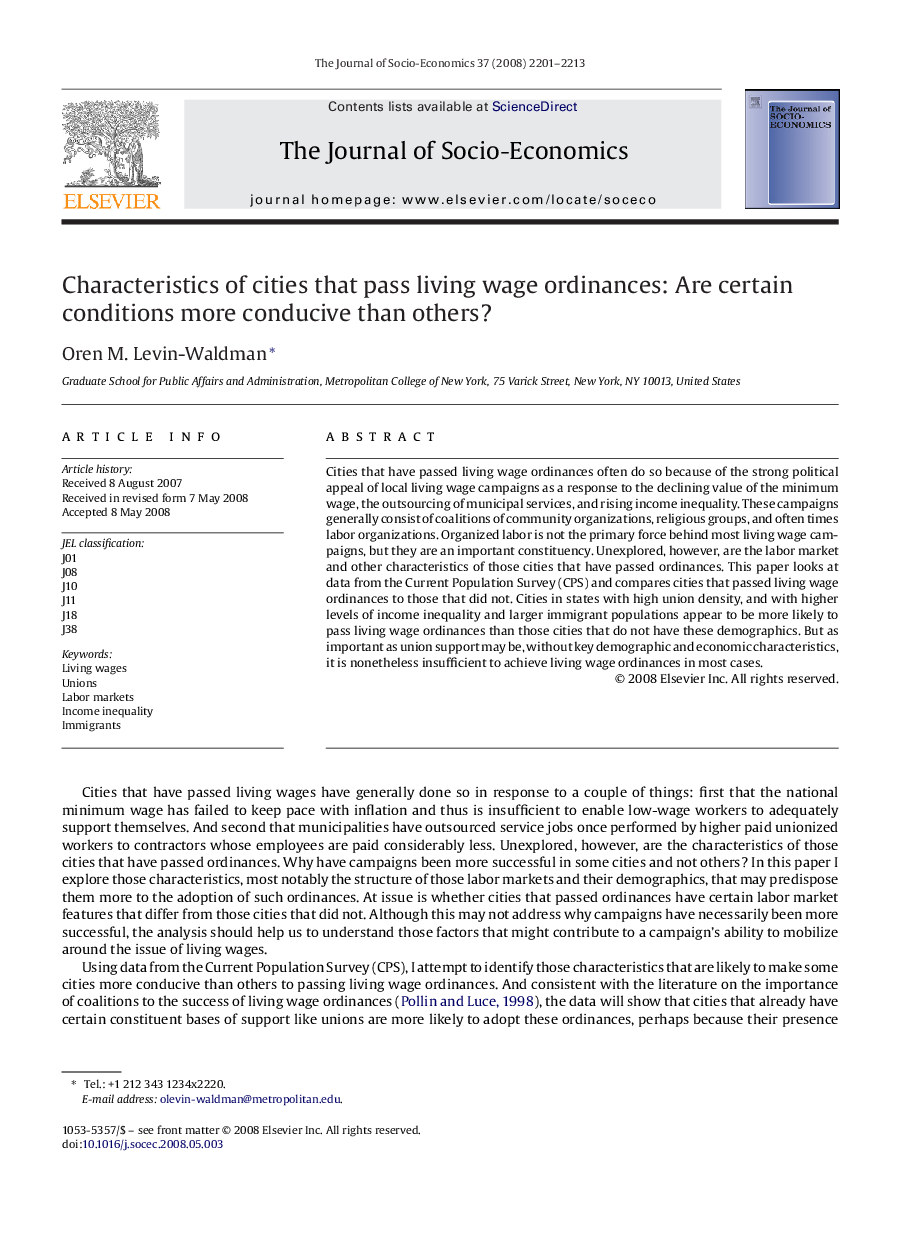| Article ID | Journal | Published Year | Pages | File Type |
|---|---|---|---|---|
| 971064 | The Journal of Socio-Economics | 2008 | 13 Pages |
Cities that have passed living wage ordinances often do so because of the strong political appeal of local living wage campaigns as a response to the declining value of the minimum wage, the outsourcing of municipal services, and rising income inequality. These campaigns generally consist of coalitions of community organizations, religious groups, and often times labor organizations. Organized labor is not the primary force behind most living wage campaigns, but they are an important constituency. Unexplored, however, are the labor market and other characteristics of those cities that have passed ordinances. This paper looks at data from the Current Population Survey (CPS) and compares cities that passed living wage ordinances to those that did not. Cities in states with high union density, and with higher levels of income inequality and larger immigrant populations appear to be more likely to pass living wage ordinances than those cities that do not have these demographics. But as important as union support may be, without key demographic and economic characteristics, it is nonetheless insufficient to achieve living wage ordinances in most cases.
